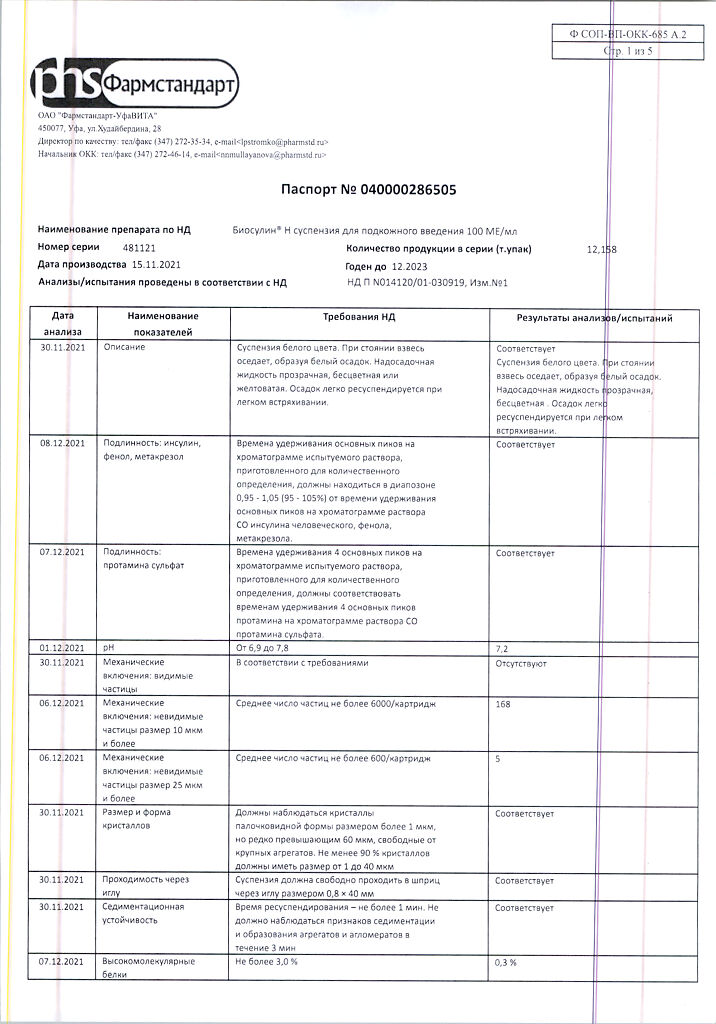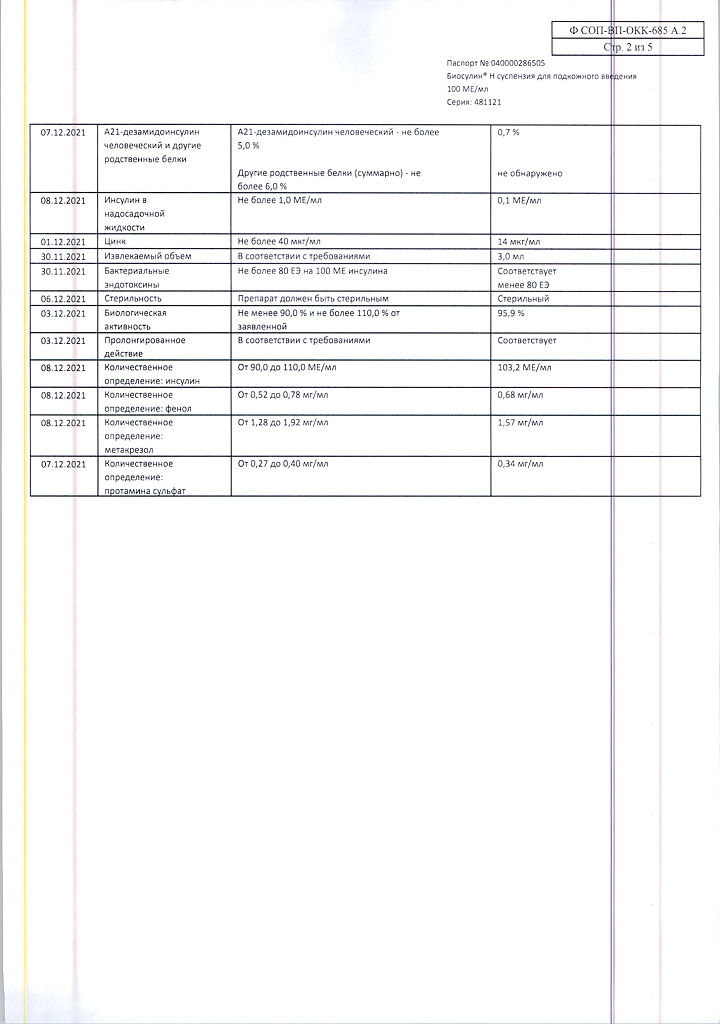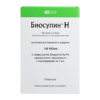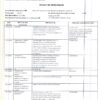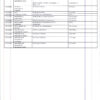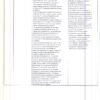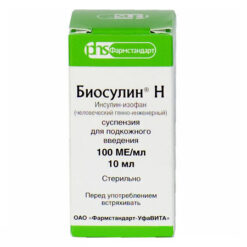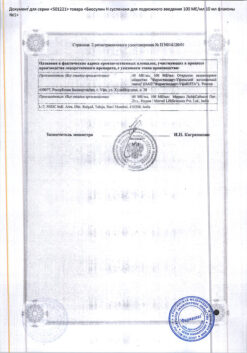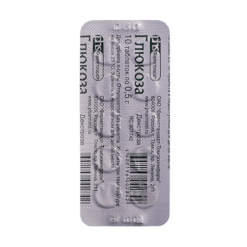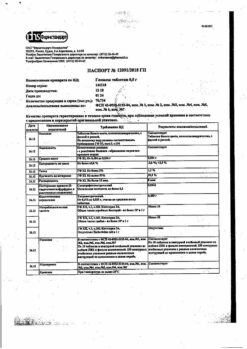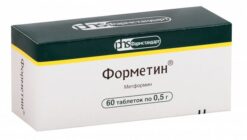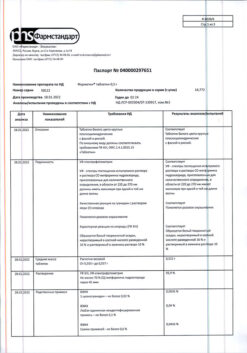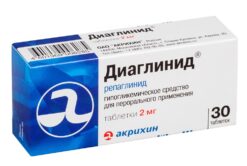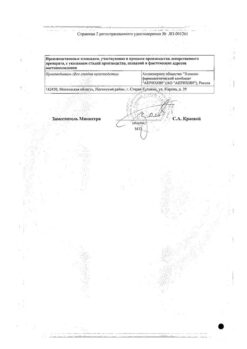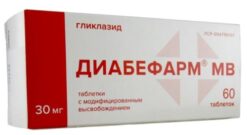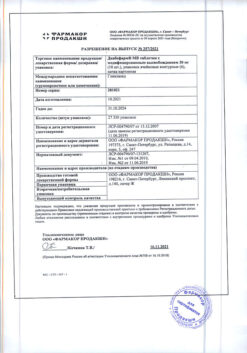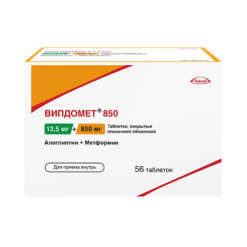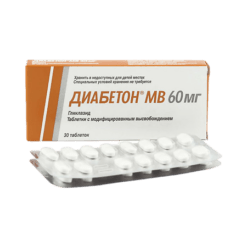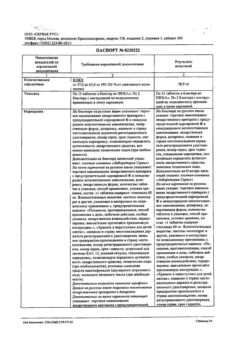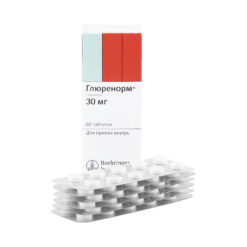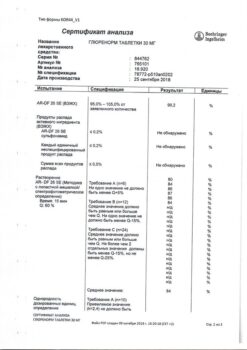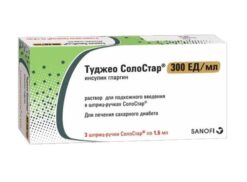No products in the cart.
Description
Pharmgroup:
Hypoglycemic agent – insulin of medium duration of action.
Pharmic action:
Biosulin® H is human insulin produced using recombinant DNA technology. It is a medium-acting insulin preparation. It interacts with specific receptor of outer cytoplasmic cell membrane and forms insulin-receptor complex, which stimulates intracellular processes, including synthesis of several key enzymes (hexokinase, pyruvate kinase, glycogen synthetase and others). Decrease of glucose content in blood is caused by an increase of its intracellular transport, increased absorption and assimilation by tissues, stimulation of lipogenesis, glycogenogenesis, decrease of glucose production rate by liver, etc.
The duration of action of insulin drugs is mainly due to the speed of absorption, which depends on several factors (e.g., dose, route and site of administration), so the action profile of insulin is subject to significant variations both in different people and in the same person.
The profile of action when injected subcutaneously (approximate figures): onset of action in 1-2 hours, maximum effect between 6 and 12 hours, duration of action 18-24 hours.
Pharmacokinetics:
The completeness of absorption and onset of effect of insulin depends on the place of administration (stomach, thigh, buttocks), dose (volume of injected insulin), the concentration of insulin in the drug, etc.
Distributes irregularly in tissues; does not penetrate through the placental barrier and into breast milk. It is broken down by insulinase mainly in the liver and kidneys. It is excreted by the kidneys (30-80%).
Indications
Indications
Diabetes mellitus type 1 (insulin dependent)
Diabetes mellitus type 2 (non-insulin dependent): stage of resistance to oral hypoglycemic agents, partial resistance to these drugs (during combination therapy), intercurrent diseases.
Pharmacological effect
Pharmacological effect
Pharmaceutical group:
Hypoglycemic agent – insulin of medium duration of action.
Pharmaceutical action:
Biosulin® N is human insulin obtained using recombinant DNA technology. It is a medium-acting insulin preparation. It interacts with a specific receptor on the outer cytoplasmic membrane of cells and forms an insulin-receptor complex that stimulates intracellular processes, including the synthesis of a number of key enzymes (hexokinase, pyruvate kinase, glycogen synthetase, etc.). The decrease in blood glucose levels is due to an increase in its intracellular transport, increased absorption and assimilation by tissues, stimulation of lipogenesis, glycogenogenesis, a decrease in the rate of glucose production by the liver, etc.
The duration of action of insulin preparations is mainly determined by the rate of absorption, which depends on several factors (for example, dose, route and site of administration), and therefore the insulin action profile is subject to significant fluctuations, both between different people and within the same person.
Action profile for subcutaneous injection (approximate figures): onset of action after 1-2 hours, maximum effect between 6 and 12 hours, duration of action – 18-24 hours.
Pharmacokinetics:
The completeness of absorption and the onset of the effect of insulin depends on the injection site (abdomen, thigh, buttocks), dose (volume of insulin administered), insulin concentration in the drug, etc.
Unevenly distributed throughout tissues; does not penetrate the placental barrier and into breast milk. It is destroyed by insulinase mainly in the liver and kidneys. Excreted by the kidneys (30-80%).
Special instructions
Special instructions
Biosulin® N should not be used if, after shaking, the suspension does not become white and uniformly cloudy.
During insulin therapy, constant monitoring of blood glucose levels is necessary.
The causes of hypoglycemia, in addition to insulin overdose, can be: replacing the drug, skipping meals, vomiting, diarrhea, increasing physical activity, diseases that reduce the need for insulin (impaired liver and kidney function, hypofunction of the adrenal cortex, pituitary gland or thyroid gland), changing the injection site, as well as interactions with other drugs.
Incorrect dosing or interruptions in insulin administration, especially in patients with type 1 diabetes, can lead to hyperglycemia. Typically, the first symptoms of hyperglycemia develop gradually, over several hours or days. They include the appearance of thirst, increased urination, nausea, vomiting, dizziness, redness and dryness of the skin, dry mouth, loss of appetite, and the smell of acetone in the exhaled air. If left untreated, hyperglycemia in type 1 diabetes can lead to life-threatening diabetic ketoacidosis.
The dose of insulin must be adjusted in case of dysfunction of the thyroid gland, Addison’s disease, hypopituitarism, impaired liver and kidney function, and diabetes mellitus in people over 65 years of age.
Insulin dosage adjustments may also be necessary if the patient increases the intensity of physical activity or changes their usual diet.
Concomitant illnesses, especially infections and conditions accompanied by fever, increase the need for insulin.
The transition from one type of insulin to another should be carried out under the control of blood glucose levels.
The drug reduces tolerance to alcohol.
Due to the possibility of precipitation in some catheters, the use of the drug in insulin pumps is not recommended.
Impact on the ability to drive vehicles and operate machinery
In connection with the primary prescription of insulin, a change in its type, or in the presence of significant physical or mental stress, there may be a decrease in the ability to drive a car or operate various mechanisms, as well as engage in other potentially hazardous activities that require increased attention and speed of mental and motor reactions.
Injection technique when using insulin in vials:
1. If the patient uses only one type of insulin
Disinfect the rubber membrane on the bottle
Fill the syringe with air in an amount corresponding to the required dose of insulin. Inject air into the insulin vial.
Turn the bottle with the syringe upside down and draw the required dose of insulin into the syringe. Remove the needle from the vial and remove air from the syringe. Check that your insulin dose is correct.
Give the injection immediately.
2. If the patient needs to mix two types of insulin
Disinfect the rubber membranes on the bottles.
Immediately before drawing, roll the vial of long-acting insulin (“cloudy”) between your palms until the insulin becomes uniformly white and cloudy.
Fill the syringe with air in an amount corresponding to the dose of “cloudy” insulin. Inject air into the vial with “cloudy” insulin and remove the needle from the vial (“do not draw cloudy” insulin at this stage yet).
Fill the syringe with air in an amount corresponding to the dose of short-acting (“transparent”) insulin. Inject air into the vial of clear insulin. Turn the bottle with the syringe upside down and draw the required dose of “transparent” insulin. Remove the needle and remove air from the syringe. Check the correct dose.
Insert the needle into the vial with “cloudy” insulin, turn the vial with the syringe upside down and draw the required dose of insulin. Remove air from the syringe and check that the dose is correct. Immediately inject the collected insulin mixture.
Always draw insulins in the same sequence described above.
Injection technique when using insulin cartridges:
The cartridge with the drug Biosulin® N is intended for use with the Biomatic Pen® or Biosulin® Pen syringe pen. The patient should be warned about the need to carefully follow the instructions in the instructions for using the syringe pen for administering insulin.
Before use, make sure that there is no damage (for example, cracks) on the cartridge with Biosulin® N. Do not use the cartridge if there is any visible damage. After the cartridge is inserted into the pen, a colored stripe should be visible through the window of the cartridge holder.
Before placing the cartridge into the pen, you should turn the cartridge up and down so that the glass ball moves from end to end of the cartridge. This procedure should be repeated at least 10 times until all the liquid becomes white and uniformly cloudy. Immediately after this you need to give an injection.
If the cartridge is already inside the pen, you should turn it with the cartridge inside up and down at least 10 times. This procedure must be repeated before each injection.
After injection, the needle should remain under the skin for at least 6 seconds. You should keep the button pressed until the needle is completely removed from under the skin, thus ensuring the correct dose is administered and limiting the possibility of blood or lymph getting into the needle or into the insulin cartridge.
The cartridge with Biosulin® N is intended for individual use only and cannot be refilled.
Injection procedure
Using two fingers, take a fold of skin, insert the needle into the base of the fold at an angle of about 45 ° and inject insulin under the skin.
After injection, the needle must remain under the skin for at least 6 seconds to ensure that the insulin is completely injected.
If blood appears at the injection site after removing the needle, apply light pressure to the injection site with your finger.
It is necessary to change injection sites.
Active ingredient
Active ingredient
Insulin-isophane human genetically engineered
Composition
Composition
1 ml of Biosulin N contains:
– genetically engineered human insulin – 100 IU;
Excipients:
zinc oxide,
sodium hydrogen phosphate,
protamine sulfate,
metacresol,
crystalline phenol,
glycerol,
water for injections.
Note.
To adjust the pH, use a 10% sodium hydroxide solution or a 10% hydrochloric acid solution.
Contraindications
Contraindications
Increased individual sensitivity to insulin or any of the components of the drug
Hypoglycemia
Side Effects
Side Effects
Caused by the effect on carbohydrate metabolism: hypoglycemic conditions (pallor of the skin, increased sweating, palpitations, tremor, hunger, agitation, paresthesia in the mouth, headache). Severe hypoglycemia can lead to the development of hypoglycemic coma.
Allergic reactions: rarely – skin rash, angioedema, extremely rarely – anaphylactic shock.
Local reactions: hyperemia, swelling and itching at the injection site, with long-term use – lipodystrophy at the injection site.
Other – edema, transient refractive errors (usually at the beginning of therapy).
Interaction
Interaction
There are a number of medications that affect the need for insulin.
The hypoglycemic effect of insulin is enhanced by oral hypoglycemic drugs, monoamine oxidase inhibitors, angiotensin-converting enzyme inhibitors, carbonic anhydrase inhibitors, non-selective beta-blockers, bromocriptine, octreotide, sulfonamides, anabolic steroids, tetracyclines, clofibrate, ketoconazole, mebendazole, pyridoxine, theophylline, cyclophosphamide, fenfluramine, lithium preparations, preparations containing ethanol.
The hypoglycemic effect of insulin is weakened by oral contraceptives, glucocorticosteroids, thyroid hormones, thiazide diuretics, heparin, tricyclic antidepressants, sympathomimetics, danazol, clonidine, calcium channel blockers, diazoxide, morphine, phenytoin, nicotine. Under the influence of reserpine and salicylates, it is possible to both weaken and enhance the effect of the drug.
Overdose
Overdose
In case of overdose, hypoglycemia may develop.
Treatment: the patient can eliminate mild hypoglycemia himself by ingesting sugar or carbohydrate-rich foods. Therefore, patients with diabetes are recommended to constantly carry sugar, sweets, cookies or sweet fruit juice with them.
In severe cases, when the patient loses consciousness, a 40% dextrose solution is administered intravenously; intramuscularly, subcutaneously, intravenously – glucagon. After regaining consciousness, the patient is advised to eat a meal rich in carbohydrates to prevent the recurrence of hypoglycemia.
Manufacturer
Manufacturer
Pharmstandard-UfaVITA, Russia
Additional information
| Manufacturer | Pharmstandard-UfaVITA, Russia |
|---|---|
| Medication form | suspension |
| Brand | Pharmstandard-UfaVITA |
Other forms…
Related products
Buy Biosulin N, 100 me/ml suspension 3 ml Biomaticpen syringe pen cartridges 5 pcs with delivery to USA, UK, Europe and over 120 other countries.


